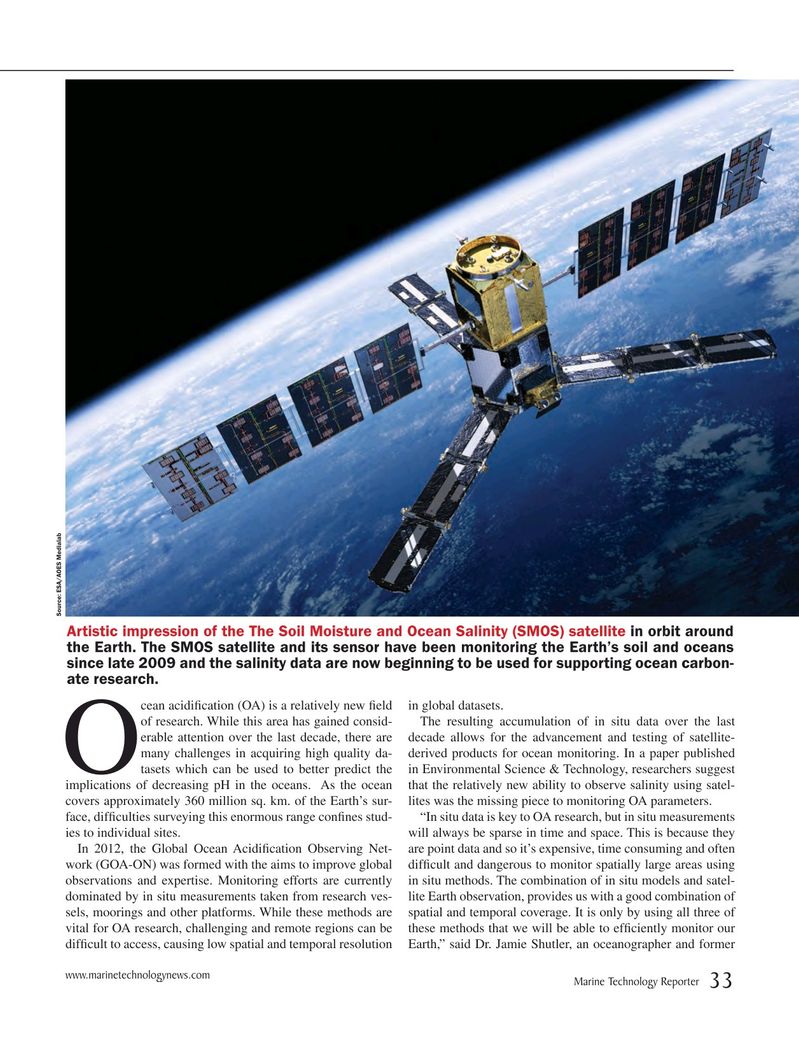
Page 33: of Marine Technology Magazine (May 2015)
Underwater Defense
Read this page in Pdf, Flash or Html5 edition of May 2015 Marine Technology Magazine
Source: ESA/AOES Medialab
Artistic impression of the The Soil Moisture and Ocean Salinity (SMOS) satellite in orbit around the Earth. The SMOS satellite and its sensor have been monitoring the Earth’s soil and oceans since late 2009 and the salinity data are now beginning to be used for supporting ocean carbon- ate research. cean acidi? cation (OA) is a relatively new ? eld in global datasets. of research. While this area has gained consid- The resulting accumulation of in situ data over the last erable attention over the last decade, there are decade allows for the advancement and testing of satellite- many challenges in acquiring high quality da- derived products for ocean monitoring. In a paper published
Otasets which can be used to better predict the in Environmental Science & Technology, researchers suggest implications of decreasing pH in the oceans. As the ocean that the relatively new ability to observe salinity using satel- covers approximately 360 million sq. km. of the Earth’s sur- lites was the missing piece to monitoring OA parameters.
face, dif? culties surveying this enormous range con? nes stud- “In situ data is key to OA research, but in situ measurements ies to individual sites. will always be sparse in time and space. This is because they
In 2012, the Global Ocean Acidi? cation Observing Net- are point data and so it’s expensive, time consuming and often work (GOA-ON) was formed with the aims to improve global dif? cult and dangerous to monitor spatially large areas using observations and expertise. Monitoring efforts are currently in situ methods. The combination of in situ models and satel- dominated by in situ measurements taken from research ves- lite Earth observation, provides us with a good combination of sels, moorings and other platforms. While these methods are spatial and temporal coverage. It is only by using all three of vital for OA research, challenging and remote regions can be these methods that we will be able to ef? ciently monitor our dif? cult to access, causing low spatial and temporal resolution Earth,” said Dr. Jamie Shutler, an oceanographer and former www.marinetechnologynews.com
Marine Technology Reporter 33
MTR #4 (34-49).indd 33 MTR #4 (34-49).indd 33 4/28/2015 9:51:32 AM4/28/2015 9:51:32 AM

 32
32

 34
34
